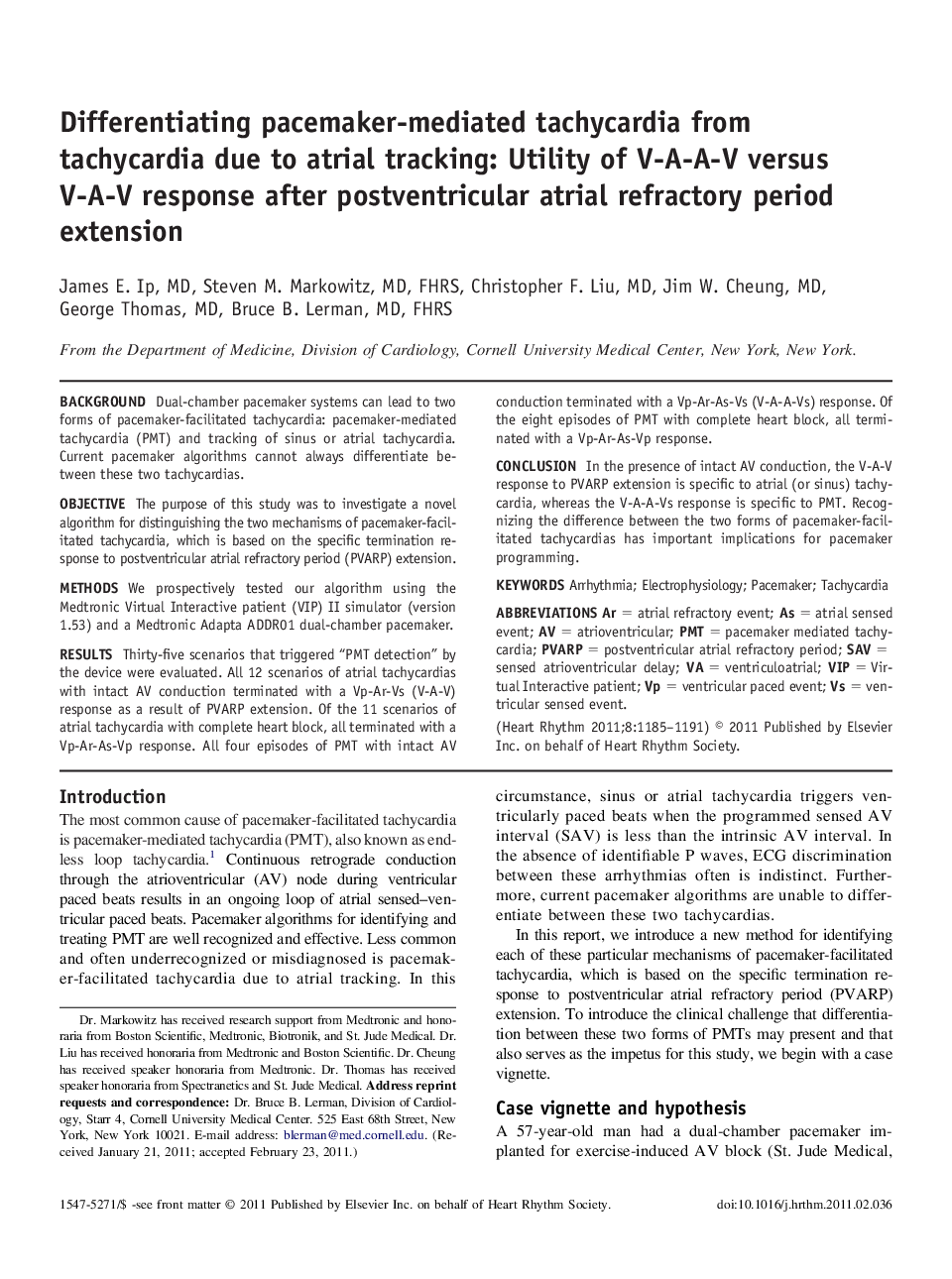| Article ID | Journal | Published Year | Pages | File Type |
|---|---|---|---|---|
| 2923083 | Heart Rhythm | 2011 | 7 Pages |
BackgroundDual-chamber pacemaker systems can lead to two forms of pacemaker-facilitated tachycardia: pacemaker-mediated tachycardia (PMT) and tracking of sinus or atrial tachycardia. Current pacemaker algorithms cannot always differentiate between these two tachycardias.ObjectiveThe purpose of this study was to investigate a novel algorithm for distinguishing the two mechanisms of pacemaker-facilitated tachycardia, which is based on the specific termination response to postventricular atrial refractory period (PVARP) extension.MethodsWe prospectively tested our algorithm using the Medtronic Virtual Interactive patient (VIP) II simulator (version 1.53) and a Medtronic Adapta ADDR01 dual-chamber pacemaker.ResultsThirty-five scenarios that triggered “PMT detection” by the device were evaluated. All 12 scenarios of atrial tachycardias with intact AV conduction terminated with a Vp-Ar-Vs (V-A-V) response as a result of PVARP extension. Of the 11 scenarios of atrial tachycardia with complete heart block, all terminated with a Vp-Ar-As-Vp response. All four episodes of PMT with intact AV conduction terminated with a Vp-Ar-As-Vs (V-A-A-Vs) response. Of the eight episodes of PMT with complete heart block, all terminated with a Vp-Ar-As-Vp response.ConclusionIn the presence of intact AV conduction, the V-A-V response to PVARP extension is specific to atrial (or sinus) tachycardia, whereas the V-A-A-Vs response is specific to PMT. Recognizing the difference between the two forms of pacemaker-facilitated tachycardias has important implications for pacemaker programming.
